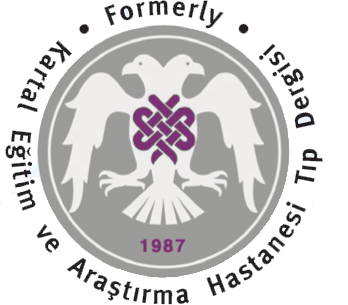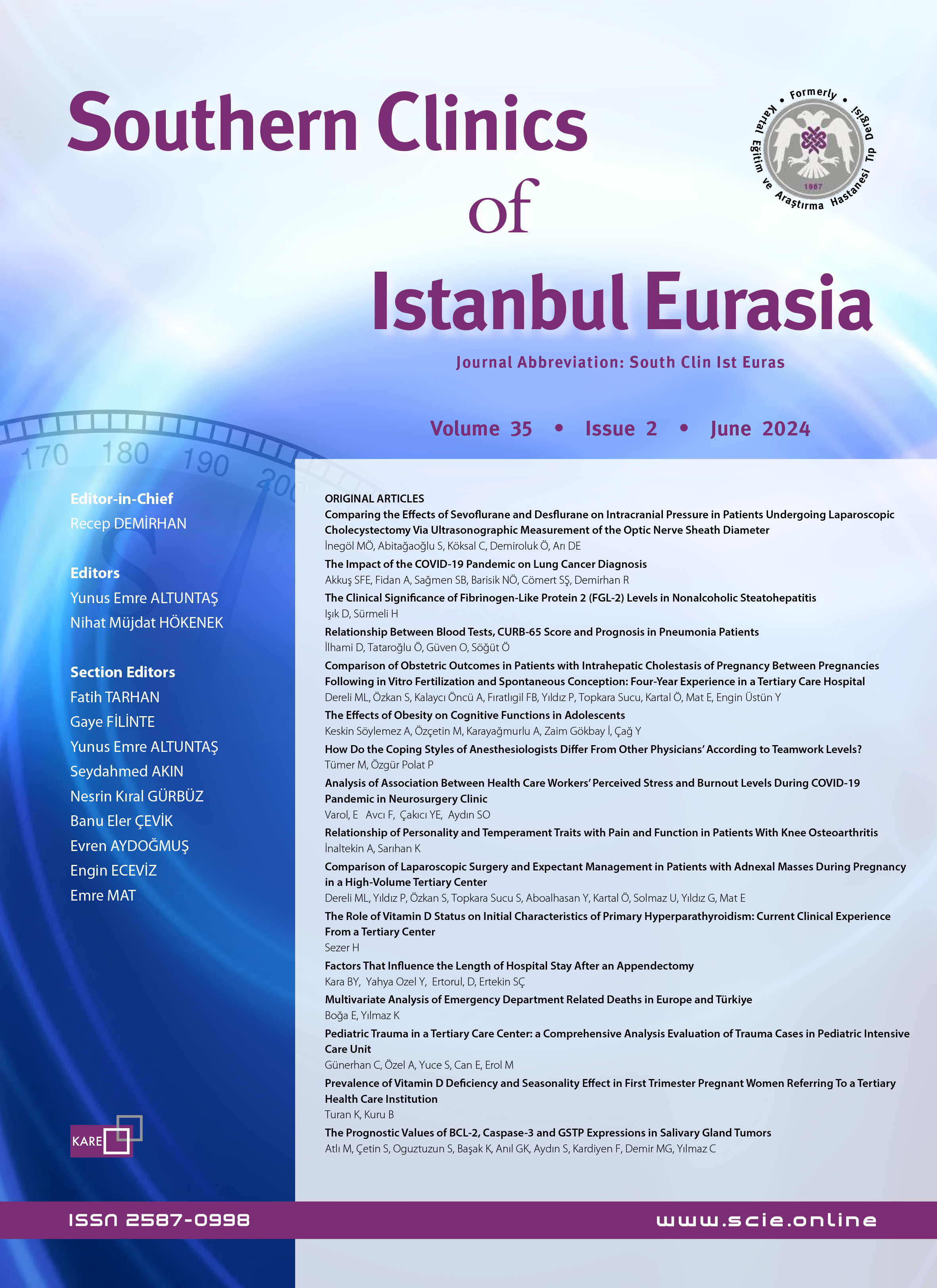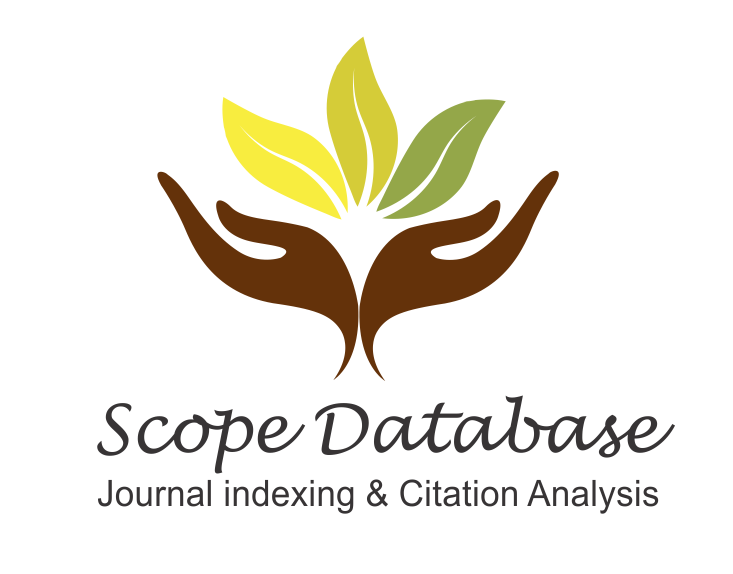Volume: 17 Issue: 1 - 2006
| RESEARCH ARTICLE | |
| 1. | Fundus Fluoresceın Angıography In Prımary Open-Angle Glaucoma Yasin Yılmaz, Arif Koytak, Ekrem Kurnaz, Kazım Erol, Yasin Çınar, Yusuf Özertürk Pages 1 - 5 OBJECTIVE: The purpose of this study is to evaluate the effectiveness of fundus fluorescein angiography (FFA) in diagnosis and prognosis of primary open-angle glaucoma (POAG). Twenty-eight eyes of 28 patients with glaucomatous optic nerve damages and visual field defects and 26 eyes of 26 control patients with no glaucomatous changes were included in this study. Slit lamp examination, intraocular pressure (IOP) measurements, visual field analyses and fluorescein angiographies of the optic nerve and peripapillary area were performed and the relation between the fluorescein filling defects and glaucomatous changes were investigated. The mean age was 57.1±10.9 in glaucoma group and 42.8±11.9 in control group. Fluorescein filling defects of optic disc was observed in 16 (57.1%) patients in glaucoma group and in 3 (11.4%) patients in control group. The difference between two groups was statistically significant (p<0.05). When the peripapillary choroideal areas were investigated, peripapillary choroideal perfusion defects were observed in 13 (46.4%) patients in glaucoma group and 1 (3.8%) patient in control group. Peripapillary atrophy was observed in 12 (42.8%) patients in glaucoma group and 5 (19.2%) patients in control group. The difference between two groups was statistically significant (p<0.05). In patients with mild glaucomatous changes, filling defect was mostly seen at superior and inferior poles of optic disc, nasal neuroretinal rim area and central area. However, in patients with severe glaucomatous changes, filling defect was observed generally in whole disc area. Peripapillary choroideal perfusion defects, absolute filling defects of optic disc, peripapillary atrophy and glaucomatous cupping may indicate insufficiency of blood flow supplementation of these regions. An increase was determined at the posterior poles of optic disc and peripapillary choroideal filling defects in FFA in parallel with the severity of the glaucoma. METHODS: RESULTS: CONCLUSION: |
| 2. | The Importance Of Perıtonea-Plasma Lactıc Acıd Value Dıfference In Dıagnosıs Of Acute Abdomen Tarık Gandi Çinçin, Ayhan Erdemir, Cengiz Menteş, Nimet Süslü, Erhan Tunçay Pages 6 - 12 OBJECTIVE: Although acute abdomen can easily be diagnosed in most cases with a good history taking, physical examination, routine laboratory and radiological tests; unfortunately it is difficult to diagnose acute abdomen in elderly and children patients with their neurological and physical conditions preventing clinical evaluation and in intensive care unit and comatose patients. We think that in suspicious cases of acute abdomen lactic acid value can be helpful in diagnosis. Lactic acid values of peritoneal fluid taken by paracentesis during diagnostic peritoneal lavage or during operation and simultaneous plasma were studied. The first group of patients (study group, n=43) were operated due to acute abdomen and the second group of patients (control group, n=35) were operated or followed-up with suspicious acute abdomen. When lactate levels were analyzed in groups, peritoneal lactate levels of study group were found to be significantly higher compared to control group (p=0.001) while no significant difference was detected between plasma lactate levels (p=0.143). When mean value of the peritoneal and plasma lactate differences were analyzed individually; it was found to be significantly higher in study group compared to control group (p=0.001). Its statistically shown that when peritoneal-plasma lactic acid value difference is more than 10 mg/dl, sensitivity is 97.67% and specificity is 94.26% in diagnosing acute abdomen. As a result, peritoneal-plasma lactic acid value difference is an important marker in diagnosis of suspicious acute abdomen cases. METHODS: RESULTS: CONCLUSION: |
| 3. | Status Of Fıne-Needle Aspıratıon Bıopsy Of Parotıd Gland Mass Sedat Aydın, Ümit Hardal, Arif Şanlı, Cenk Evren, Aylin Ege Gül Pages 13 - 16 OBJECTIVE: To obtain sensitivity, specificity, positive and negative predictive values of fine-needle aspiration biopsy which affects the upcoming treatment procedure with malign-bening tumor extraction from parotid gland mass. Between years 2002-2005, a comparison done with cytological indications from preoperative fine-needle aspiration biopsy of parotid and postoperative histopathological indications of 60 patients (36 females [%60], 24 males [%40]; mean age 43.7; range 26-77 years) operated due to parotid mass in Kartal Training & Research Hospital the 2nd Head & Neck Clinic. Pleomorphic adenoma in 34 cases (56.6%), Whartin tumor in 12 cases (20%), malignant tumor in 5 cases (8.3%), process inflammation in 4 cases (6.6%) and insufficient materials in 5 cases (8.3%) were found from fine-needle aspiration biopsy results. Preoperative fine-needle aspiration biopsy should be applied in parotid mass because of its applicability without local anesthesia in polyclinical conditions, being atraumatic and low cost without preparation, having healing process without scar and its contribution for deciding the operative procedure. METHODS: RESULTS: CONCLUSION: |
| 4. | The Effect Of The Intraocular Lens Materıal On Posterıor Capsular Opacıfıcatıon Arzu Taşkıran Çömez, Yelda Buyru Özkurt, Onur Karadağ, Ömer Kamil Doğan Pages 17 - 21 OBJECTIVE: The relationship between intraocular lens (IOL) material and posterior capsular opacification (PCO) rate that occurred in the third year after cataract operation were evaluated. 1274 eyes of 988 patients aged between 43 and 89 years (mean 65.2), who had undergone cataract surgery with posterior chamber intraocular lens implantation in M.O.H. Dr. Lütfi Kırdar Kartal Training and Research Hospital 1st Eye Clinic were evaluated between March 1999 and March 2004 retrospectively. The age of the patients, the type of the cataract, the type of the IOL and PCO rates in the postoperative 1st, 2nd, 6th months, 1st and 3rd years were recorded. In 976 of 1014 eyes (96.2%) undergone phacoemulsification, hydrophilic acrylic (Group A) and in the rest 38 eyes (3.75%) hydrophobic acrylic intraocular lenses (Group B) were implanted. In 260 eyes (20.40%) undergone extracapsular cataract extraction, polymethylmethacrylate (PMMA) lenses were implanted (Group C). PCO rates in the 3rd year postoperatively were 29 eyes out of 976 eyes (2.97%) in group A; 1 eye out of 38 eyes (2.63%) in group B and 18 eyes out of 260 eyes (6.90%) in group C. We concluded that PCO rates in hydrophobic acrylic lenses were lower than the hydrophilic acrylic lenses and PMMA lenses. METHODS: RESULTS: CONCLUSION: |
| 5. | Wıre Localızatıon In Non-Palpable Breast Lesıons Gülay Dalkılıç, Turgay Erginel, Hakan Acar, Fazlı Cem Gezen, Engin Baştürk, Selahattin Vural, Mustafa Gülmen Pages 22 - 24 OBJECTIVE: With the widespread usage of screening mammography, encounter rate of non-palpable lesions within breast were increased. Imagining technique guided preoperative wire localization is useful for the histopathologic diagnosis of these lesions. Retrospective review was performed on 34 patients with non-palpable lesions diagnosed by mammography-guided wire localization under local anesthesia between January 2000 to March 2005. The mean age of patients was 43.8 (range 26-58). The lesions were diagnosed with mastodynia in eighteen of them (52.9%) and during periodical controls for hormone replacement in 16 (47.1%) patients. Twenty-two patients (64.8%) demonstrated calcifications and 12 patients (35.2%) had mass lesion together with calcifications. Histopathologic examinations revealed 22 (64.8%) benign lesions and 12 (35.2%) invasive carcinoma. Two patients had undergone breast preserving surgery and ten had modified radical mastectomy. No complication was developed during wire localizations of the lesions. Wire dislocated in two patients during operation. Four patients developed postoperative hematoma and one patient had wound necrosis treated conservatively. METHODS: RESULTS: CONCLUSION: |
| 6. | Trabeculectomy Wıth Releasable Sutures And Mıtomycın-C In Hıgh Rısk Glaucoma Ekrem Kurnaz, Anıl Kubaloğlu, Yasin Yılmaz, Arif Koytak, Yusuf Özertürk Pages 25 - 30 OBJECTIVE: To determine whether the use of releasable suture technique affects the success rate and the incidence of complications following Mitomycin-C (MMC) trabeculectomy in high-risk glaucoma patients. This randomized study included the patients undergone MMC trabeculectomy (0.4 mg/ml, 2 minutes). For closing scleral flap, releasable suture was used in 31 patients (group 1) and permanent suture was used in 29 patients (group 2). Follow-up visits were performed at first week and at 1, 3, 6, 12 months postoperatively and outcome measures including intraocular pressure (IOP) and incidences of complications were recorded. Success was defined as IOP of less than 21 mmHg or greater than 6 mmHg with or without antiglaucoma medication. The mean age was 58.13±14.93 in group 1 and 54.90±16.68 in group 2. The mean follow-up time was 20.06±6.95 months in group 1 and 21.62±8.10 months in group 2. Postoperative IOP reductions were statistically significant at all follow-up visits in both group (p<0.05). The incidence of hypotony was significantly higher in group 2 (p=0.039). In the final visit, success rates were 83.33% in group 1 and 80.95% in group 2. No cases of releasable suture related corneal infection and endophthalmitis were encountered in our study. The use of releasable suture technique in MMC trabeculectomy is an effective method for preventing early postoperative hypotony related complications in high risk glaucoma patients. METHODS: RESULTS: CONCLUSION: |
| CASE REPORT | |
| 7. | Gıant Condylomata Acumınata (Buschke-Lowensteın Dısease): Case Report Orhan Şad, Nejdet Bildik, Ayhan Çevik, Hüseyin Ekinci, Mehmet Altıntaş, Mustafa Gülmen Pages 31 - 35 Condylomata acuminata is a sexually transmitted disease caused by human papilloma virus. It is frequently seen on perianal regions and genitalia. A giant form of this disease that we have presented in this paper is called (Buschke-Löwenstein disease) as verrucous carcinoma. Male patient was admitted to our clinic with an ulcerated mass of 18 centimeters in diameter extending from mucocutaneous line of the anus to the left gluteal region. He was complaining of pain, difficulty in walking and foul odor. An extended surgical excision and temporary colostomy were performed by sparing rectum and anal sphincters. Two more debridments were performed. Five months later following the surgery two recurrent lesions have been excised and the stoma has been closed. During a year of follow-up, no recurrence has been observed. |
| 8. | Clınıcal Complıcatıons Due To Chronıc Vıtamın D Usage (Case Report) Hikmet Tekçe, Tamer Alıcı, Hülya Bahadır Çolak, Özlem Özentürk, Seyhun Kürşat Pages 36 - 41 A 60-years-old woman was hospitalized for confusion and neurologic disorders. Routine biochemistry tests revealed severe hypercalcemia (serum total calcium level=20.0 mg/dl), renal failure (serum creatinine level=2.7 mg/dl, creatinin clearance=19.6 ml/min) and hyperphosphatemia (serum phosphate=8.3 mEq/L). The patient reported that she had been on treatment with an oral vitamin D preparation since she was 32 years old. Plasma 25-OH vitamin D was 42 ng/mL (reference range 16-74 ng/mL), plasma 1.25-(OH)2 vitamin D >300 pg/mL (reference range 14-60 pg/mL), plasma parathyroid hormone <3 pg/mL (reference range 10-65 pg/mL). There were diffuse calcifications involving kidneys, mediastinal vasculature, pleurae, liver, cerebrum, cerebellum, thyroid cartilage, skeletal muscles. While hypercalcemia was treated by infusion of isotonic saline, furosemide and prednisolone, hyperphosphatemia was controlled by sevelamer hydrochloride, renal functions did not improve for four months follow-up. This case shows that inadvertent and uncontrolled use of vitamin D preparations can result in apparently irreversible renal failure as a severe complication. In conclusion, patients using vitamin D must be followed closely for both clinical and laboratory parameters including biochemical parameters and parathyroid hormone levels. |
| 9. | Multıfocal Sımultaneous Phytobezoar, An Unusual Entıty: Case Report Oğuzhan Dinçel, Erdem Kınacı, Seher Şirin, Erhan Ayşan, Arslan Kaygusuz Pages 42 - 45 Bezoars consist of indigested food and foreign materials that accumulate within the gastrointestinal tract. Bezoars frequently cause mechanical obstruction by passing into the small bowel where they are symptomatic. This is an indication of urgent operation. In this article, we presented 53 year old man with upper abdominal pain, constipation, epigastric pain, nausea, vomiting and operated for gastric ulcer seven years ago. Abdominal X-ray studies revealed ileus signs (air-fluid levels) and than we operated him. There were two bezoars; one in stomach and one in jejenum. Bezoars were extracted by gastrotomy and jejunotomy. In clinical aspect, symptomatic bezoars are usually being located in one focus within the gastrointestinal tract. Multifocal presentation is very rare. We shouldnt forget to exploration another parts of gastrointestinal tract for all bezoars subject. |
| 10. | Frontal Sınus Mucoceles Ziya Bozkurt, Özlem Çelebi, Günay Ateş, Alev Oktay Pages 46 - 49 Frontal sinus mucoceles are rarely seen benign neoplasms. Mucoceles are believed to form following obstruction of the sinus ostio, with accumulation of fluid if the mucus production continues within the mucocele, it expands gradually. This results in remodeling and/or erosion of the surrounding bone. Treatment of mucoceles is surgical. Some authors support an endoscopic approach to the frontal sinus, where as others think that the best therapeutic procedure for the frontal mucoceles is the open surgery. In this study, intranasal and external approach to the frontal sinus mucoceles with two cases which one of them limited in frontal sinuses and the other expanding to the orbita is discussed. |
| REVIEW | |
| 11. | Screenıng And Surveıllance For Colorectal Cancer Feza Hüseyin Remzi, Mustafa Öncel Pages 50 - 57 Abstract | |



















